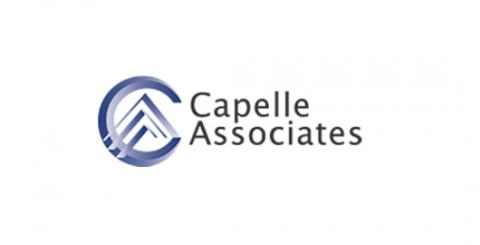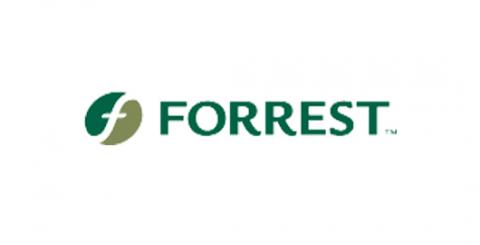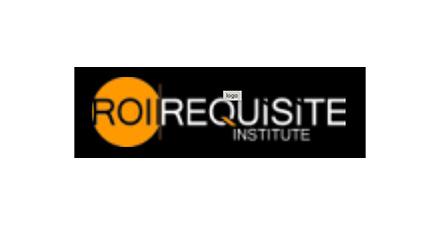
Talent Management Challenges
- Cecilia from Argentina, and I work at AMG Consulting. Am G is a firm that has 25 years working in Latin American countries. One of our practices is what I'm going to talk about today. We intervene and help companies go through the growing and changing processes.
- Complexity of business environment is increasing, and shortage of talent is one of the main concerns to address this increasing complexity. Ro is a privileged framework to address these concerns because it helps connect the business challenges or the business issues with the organizational design.
- So in the talent assessment, what we do first is we train managers in the framework. Then it comes the assessment and we do apply two methodologies that we call it internal and external. What we get as an output here is talent succession, retention and development plans and unified leadership practices.
- When it's better to use internal assessment, when demand almost anytime. But when the demand is regarding talent development, it is essential that managers are involved from the first phases. Both methods are valid. It's key to connect results to the business needs.
Speaker A So our speaker number one is Cecilia Cortina with AMG Consulting Group out of Argentina. I won't say Venezuela. No. And I'm going to turn the floor over to her. Okay? Good afternoon, everyon...
Transcript of the presentation video
NOTE: This transcript of the video was created by AI to enable Google's crawlers to search the video content. It may be expected to be only 96% accurate.
Speaker A So our speaker number one is Cecilia Cortina with AMG Consulting Group out of Argentina. I won't say Venezuela. No. And I'm going to turn the floor over to her. Okay? Good afternoon, everyone. A little introduction of myself. As Michelle said, I'm Cecilia from Argentina, and I work at AMG Consulting. Am G is a firm that has 25 years working in Latin American countries. We have four main practices, and one of our practices is what I'm going to talk today. The four practices are mainly we have an integrated approach to help companies in their growing and transformational processes. So what we address here in these four practices are mainly the vision and direction of the company and the strategy. Then the one that is related to these, that is the organizational design and the capability it to accomplish that strategy. Then the third practice is cultural alignment, also to accomplish the company's strategy and then value delivery. So with this approach, we intervene. Is that correct? Intervene. We intervene and help companies go through the growing and changing processes. And we have lots of experience with mergers and acquisitions, and this practice has been very useful, particularly in those cases. Let me know if you don't understand or if I make up a word or something like that. So I've been working at AMG for the past ten years. Actually, it's been eight. But I count the two years that I was doing my full time masters, and I count them only because I want to have more days of vacation. So I've convinced Susana that I have been working there for ten years, but it's actually eight. Okay, so I'll start my presentation by bringing up what we've found. What we found is happening in our environment. So nothing new. Complexity of business environment is increasing, and shortage of talent is one of the main concerns to address this increasing complexity. So, bringing up the voices of our clients, we wanted to share with you what we've heard are the main concerns of CEOs and HR managers. So what they are saying, at least in Argentina, but I think we can generalize this a little bit, is that they are concerned to see if they have the right talent pool to sustain business growth and to execute their strategy. And HR managers are concerned about how can they engage managers to help them accountable and engage them in developing that talent. Because we can say managers are accountable for developing talent, but then when we go to the real life, managers, most of the time don't have time to spend developing talent. So that is one of the main concerns of HR managers. Am I stepping on? Excuse me. So what we also found is that Ro is a privileged framework to address these concerns because it helps its principles help connecting the business challenges or the business issues with the organizational design. How do they need to be organized in order to achieve those challenge and to match the capability, the organizational capability in order to execute it. So we found that if these connections are made during the assessment interventions or the talent management interventions, it's much more easier to engage managers and to make them accountable. Because when they see these connections to what they need to achieve to their goals, they become much more open to engagement in assessing their team's capabilities and in developing their team's capabilities. So, this is how we've designed our talent management process. We always start with the business strategy input, see, trying to understand what the company needs to achieve or what each area needs to achieve in terms of business goals. So once we understand that, we share the frame of reference and we try to analyze what level of complexity this strategy has in order to then analyze what levels of complexity the roles have and what complexity they need to delegate to their teams in order to accomplish that. So those steps are very important. And we spend a lot of time working with managers to share this part and these levels of complexity. When they have agreed with that, when we have and we have a report on the levels of complexity, then we go into the assessment part. That is, when we assess the capability within the organization. And the third one, but not less important, because many projects can stop at the assessment when they have the picture of what capability the organization has, but then they forget why they were doing this. So one of the main steps is to build a talent development strategy because once again all we need to do is to connect this with the business needs. So a little more deep, how do we do this in terms of process excuse to assess organizational complexity? We meet with the CEO usually and with top management team to determine the organizational complexity according to their business strategy. Many times we start as we have an integrated approach. We have this from previous practices that we have been working with the company, but if we wouldn't, we start talking about this with the top management, about where do you want to go and what do you want to accomplish? Okay, how big is that project or that strategy and therefore what organization do you need to accomplish that in this period of time that you're planning on. So then we go to analyze organizational roles and sometimes our projects involve the entire organizations and sometimes they involve one area or one direction. So this can be adjust to the client's demand, right? But what we do is we analyze role descriptions to understand complexity and many times we found that role descriptions are outdated. So in those cases we have some tools that we use to have the right sense of the actual roles, right? I will show them to you. Then we made our hypothesis of the complexity of the structure and we validate that with the CEO and the top management. So our outputs is a report with the strategy size, the organizational complexity and roles complexity and I will show you how it looks like here, see, this is some tool that we sometimes use to do that. Those are forms to analyze the roles, right? So we have one that the person that the occupant of the role fills out saying what he does. And there's another one that the direct manager fills out saying what he delegates and sometimes there are mismatches in there, so that's also good to find out. But that is what help us to be more certain about the complexity of the role. And these are examples of how it looks the report, right? The size of the strategy, the company, the size of the different roles. This is an example of top management team roles and each role with its mission and task and level of complexity of those tasks go back. So in the talent assessment, what we do first is we train managers in the framework and we train them in the methodology to assess their employees, their subordinates, managers and managers once removed. And many times we also do an HR training because in projects, we've done projects of 3000 people and what we encourage is to do it internal. So we train an HR team to be the internal consultant and to do those meetings then with managers to assess their teams. So then it comes the assessment and we do apply two methodologies that we call it internal and external. So the internal is when we train managers to do it by their judgment. An external is when an external consultant just meet with the person that occupies the role and makes an assessment of their level of capability of work. And I'll go deeper in that in a minute. Then we do a calibration process here, the manager once removed get involved. And then there are two phases. One when the manager once removes get involved and the other one when we look at the entire map of capability and make sure that the results are calibrated between areas. So what we get as an output of this is a talent pool matrix, the actual and potential capability max and the maps and the adequacy to role complexity. And I'll show that to you. Sorry. Here. Oh, I forgot. These are tools that we use just to facilitate the process. There are not tools that we sell or anything, we only use them to facilitate the process. And one is called the Career Trail Profile and that is a form that the occupant of the role fills out and this is about his past career and it helps build the capability curve backwards, right? And the other one is a capacity metrics that the manager fills out and it helps him to assess at what level of capability that person is able to work. And this is an example of what we report, the metrics, the capability map, where you can then find out if you will need more because of the strategy, if you will need more strategical capability or whatever you will need, and also if you have the right people to cover the critical positions or not. Sorry. The Apple Symphony and the talent development process. There HR and the top management, they plan the strategical planning. Then we train leaders in managerial practices to develop this talent. And the feedback process occurs here to the person. So sometimes if it's external, we give feedback, if it's internal, we train managers to give developmental feedback. And so what we get as an output here is talent succession, retention and development plans and unified leadership practices. Fat okay, so I'll skip this one because it's pretty much the same, just how it occurs in terms of time. And I will go to this. That was the question that was in the program that many of you said so when do we recommend internal or when do we recommend external? I already said it. So when it's better to use internal assessment, when demand almost anytime. Like we always encourage organizations to use the internal assessment. But when the demand is regarding talent development, it is essential that managers are involved from the first phases. So it's very critical to do it internal. And also when management teams, you need management teams with knowledge of people, otherwise it's very hard to do it. The benefits is that they get common criteria construction between managers, a management team with knowledge of the talents and their implications for business growth and an increased confidence and sense of managerial responsibility. And as you involve the HR team, they position their role more strategically. When it's better to use external, we've used it a lot in mergers and acquisitions because there is no knowledge of the people and the views can be biased. So it is better to have a more objective point of view and also for selection purposes and its benefits, a more objective opinion, experts recommendations, and as we give feedback as experts, it's a more deep feedback for the person so they can use that for their own development. Last we found, I'm almost done, we just did some correlations because some organizations ask us to do both things at the same time. They do it internal, but then they want an objective view. So we've done the internal and the external assessment on the same cases and we found a pretty high correlation, same as Elliot said 20 years ago. So for us, both methods are valid. Some things that we've learned, this is the last thing I will say is that it's key to connect results to the business needs, to address and to engage managers and to address the organizational concerns, you need to decide what methods depending on the client's characteristics and what's the demand. It's key to always involve managers and preserve their accountabilities and involve HR managers as partners because they can be a barrier if you don't or a very helpful partner in this project. So always involve them and consider the person's individual needs when you're assessing their capabilities and give them something that they can use as their own benefit for development. And I think that's it questions it.

Major organizations and consulting firms that provide Requisite Organization-based services









